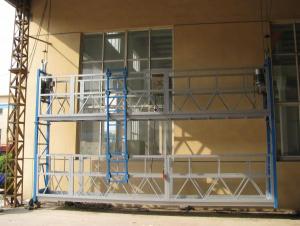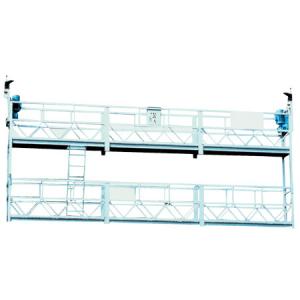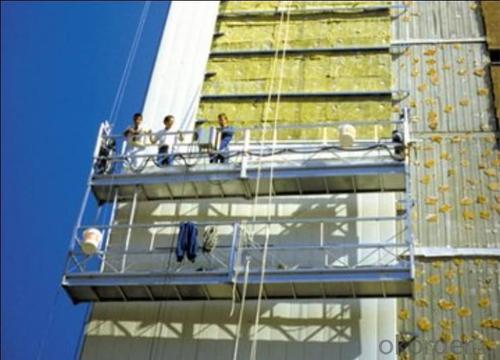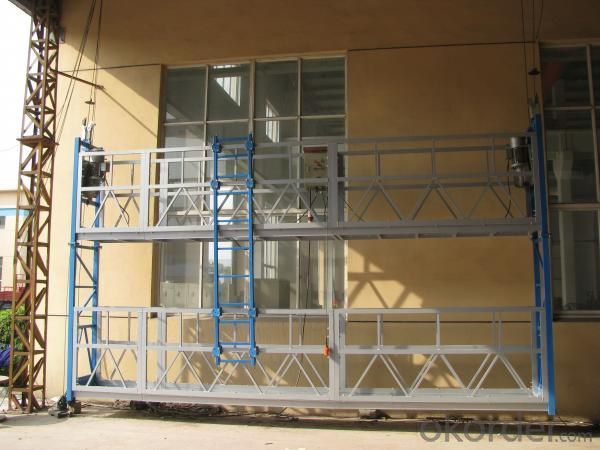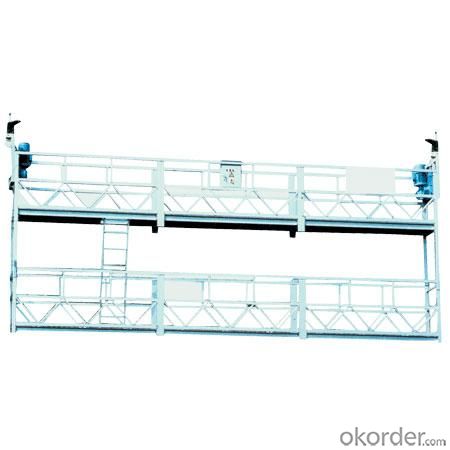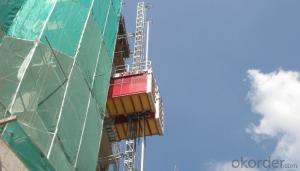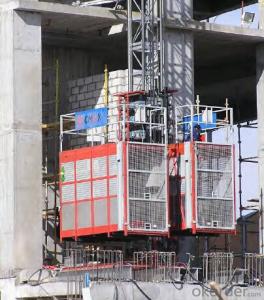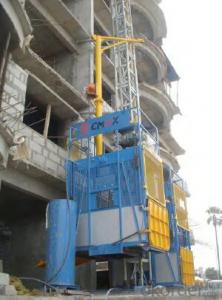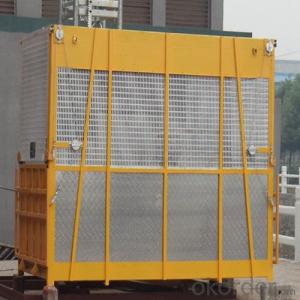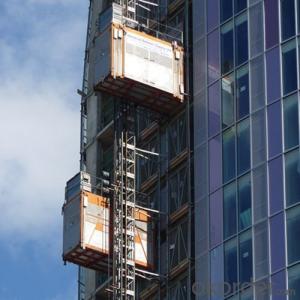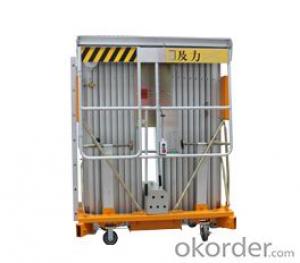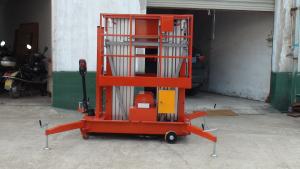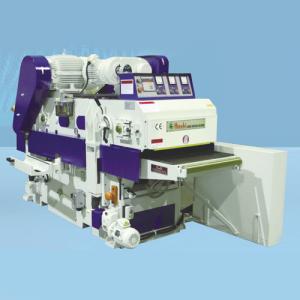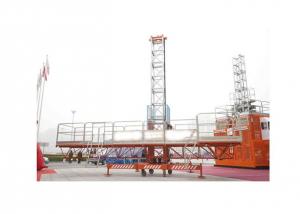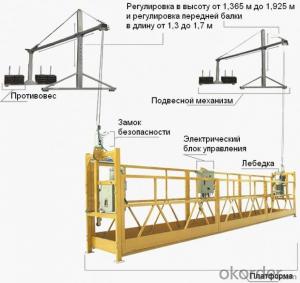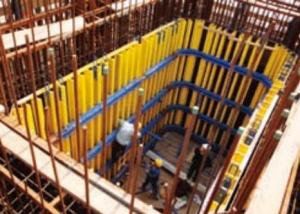Double Deck Platform
- Loading Port:
- China Main Port
- Payment Terms:
- TT or L/C
- Min Order Qty:
- 1 Set m.t.
- Supply Capability:
- 1000 Sets Per Month m.t./month
OKorder Service Pledge
OKorder Financial Service
You Might Also Like
2ZLP350
ZLP series temporarily installed suspended access equipment, which is developed and produced by CNBM INTERNATIONAL CORPORA.TION, is ideal equipment for building facade construction, decoration, cleaning and maintenance. And it is also widely used in elevator installing, ship building and repairing, or in other works such as big-size tank, bridge, embankment and chimney. ZLP series versatile knock-down platforms provides workers safer, easier and more efficient platform access.
Note: the voltage and frequency could up to different countries' standard
Main Parameters for 2ZLP350 double-decks platform
Item | Parameters | ||
Rated capacity | 350 kg | ||
Rated speed | 8-10 m/min | ||
Platform length | 6 m | ||
Steel rope | 6*19W+IWS-8.6 | ||
Hoist | Hoist model | LTD8 | |
Rated lifting force | 8 kN | ||
Motor | Model | YEJ100L1-4 | |
Power | 2.2 kW | ||
Phase | 3 phase | ||
Speed | 1420 r/min | ||
Brake force moment | 15 Nm | ||
Safety lock | Configuration | Anti-tilting | |
Permission force of impact | 30 kN | ||
Locking Cable Distance | <100mm | ||
Locking Cable Angle | 3°~8° | ||
Suspension mechanism | Front beam overhang | 1.3-1.7 m | |
Height adjustment | 1.365 -1.925 m | ||
Counter weight | 1000 kg | ||
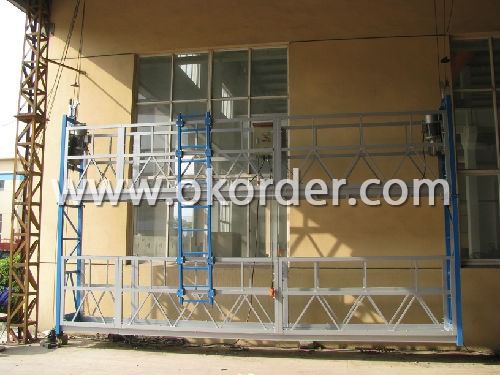
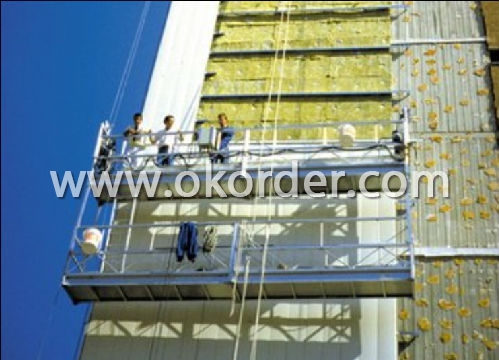
- Q: What fundamental specifications or conditions must be met to operate a building hoist with a hydraulic pump?
- <p>To use a hydraulic pump to power a building hoist, several basic requirements must be met: a reliable power source, a suitable hydraulic pump with the correct pressure and flow rate, a robust and leak-free hydraulic system, safety mechanisms such as pressure relief valves and emergency stop features, proper installation and maintenance procedures, and adherence to safety standards and regulations. Additionally, the pump should be compatible with the hoist's design and capable of providing the necessary force and speed for lifting operations. Regular inspections and maintenance are crucial to ensure the hoist operates safely and efficiently.</p>
- Q: How to save the elevator accident
- The elevator is an important vehicle in high-rise buildings, and if a failure occurs, passengers may be trapped, falling, and other hazardous accidents. Emergency point When the elevator is not normal, the legs are slightly bent and the upper body is tilted forward to cope with the possible impact. When the elevator is suddenly stopped, don't walk out the door easily, in case the elevator suddenly starts. When trapped in an elevator, stay calm and immediately use an elevator alarm bell, a walkie-talkie or telephone to contact with the relevant personnel and wait for outside help. If the alarm doesn't work, you can call loudly or intermittently tap the elevator door. If a fire broke out on the way, the elevator should stop at the nearest floor and escape quickly from the stairs.
- Q: This question asks for a comparison between electric and manual lifting equipment, highlighting their distinct features and operational differences.
- <p>Electric lifting equipment, such as electric hoists and cranes, operates using electrical power and is designed for heavy-duty lifting and repetitive tasks. It offers high efficiency, ease of use, and often requires less physical effort from operators. On the other hand, manual lifting equipment, like levers, pulleys, and manual hoists, relies on human power and is typically used for lighter loads or in situations where electrical power is not available. Manual equipment is generally more portable and requires no power source, but it is slower and more labor-intensive. Electric equipment is more suitable for industrial settings, while manual equipment is often used in smaller-scale operations or for temporary tasks.</p>
- Q: Why is the construction elevator not up to the roof
- The free end of the construction of the lift height is only 7.5 meters high, general construction elevator drive now is the case, so the hoisting cage height and drive around 4.5 meters high, the other national standard construction elevator ceiling limit moves, drive above about 1.8 meters away from the top of the rails. So it's the free end of the construction elevator that can't satisfy the roof. As long as they can set up effective adhesion measures, they can also get on the roof.
- Q: Explain the benefits and drawbacks of using an electric winch compared to a building hoist.
- <p>Advantages of using an electric winch include ease of operation, lower noise levels, and the ability to be used in various environments. They are also more portable and can be easily moved between different locations. Disadvantages include higher initial costs compared to some building hoists, potential electrical hazards, and the need for regular maintenance to ensure safety. Additionally, electric winches may have lower lifting capacities compared to some building hoists, which could be a limitation for heavy construction tasks.</p>
- Q: The user is asking if it's possible to use a building hoist, typically used for construction, to lift a car.
- <p>Using a building hoist to lift a car is not recommended. Building hoists are designed for lifting materials and equipment in construction settings, not for vehicles. They may not have the appropriate safety features or load-bearing capacity for a car. Attempting to lift a car with a building hoist could result in damage to the car, the hoist, or even personal injury. For lifting a car, it's best to use a vehicle-specific lift or a hydraulic lift designed for such purposes, ensuring safety and proper support.</p>
- Q: A lift motor is 7.5 KW, and the frequency converter sends current 4.2 A, which has A heating resistance in the converter, and how the charge is calculated when the lift is full. Or consider the power of the converter and the power of the thermal resistance.
- Try using the security software. There is a cracked version
- Q: How to adjust the weight limit of the construction elevator
- It's very simple, there's a couple of buttons down here, okay
- Q: Is it possible to utilize a double-rope lifting mechanism within the context of a building hoist?
- <p>Yes, a double-rope lifting system can be used in a building hoist. This system offers advantages such as increased safety due to redundancy and the ability to lift heavier loads compared to a single-rope system. The double-rope setup allows for the hoist to handle the load with two separate ropes, reducing the risk of failure and providing a more stable lifting platform. It's common in applications where high load capacities and safety are paramount, such as in construction for lifting materials and equipment.</p>
- Q: This question asks if improper functioning or lack of maintenance in hydraulic cylinders can lead to damage.
- <p>Yes, hydraulic cylinders can cause significant damage if they malfunction or are not properly maintained. Malfunctions can lead to leaks, component failure, or even structural damage due to pressure surges. Lack of maintenance can cause wear and tear, leading to reduced efficiency and potential failure. Regular maintenance, including checking for leaks, ensuring proper lubrication, and replacing worn parts, is crucial to prevent damage and ensure the safe operation of hydraulic systems.</p>
1. Manufacturer Overview
| Location | JIANGSU,CHINA |
| Year Established | 1998 |
| Annual Output Value | Above US$10 Million |
| Main Markets | CHINA |
| Company Certifications | ISO 9001:2000; |
2. Manufacturer Certificates
| a) Certification Name | |
| Range | |
| Reference | |
| Validity Period |
3. Manufacturer Capability
| a) Trade Capacity | |
| Nearest Port | Shanghai |
| Export Percentage | 0.6 |
| No.of Employees in Trade Department | 300 People |
| Language Spoken: | English;Chinese; |
| b) Factory Information | |
| Factory Size: | Above25,000square meters |
| No. of Production Lines | Above 1 |
| Contract Manufacturing | OEM Service Offered;Design Service Offered |
| Product Price Range | Average |
Send your message to us
Double Deck Platform
- Loading Port:
- China Main Port
- Payment Terms:
- TT or L/C
- Min Order Qty:
- 1 Set m.t.
- Supply Capability:
- 1000 Sets Per Month m.t./month
OKorder Service Pledge
OKorder Financial Service
Similar products
Hot products
Hot Searches
Related keywords

